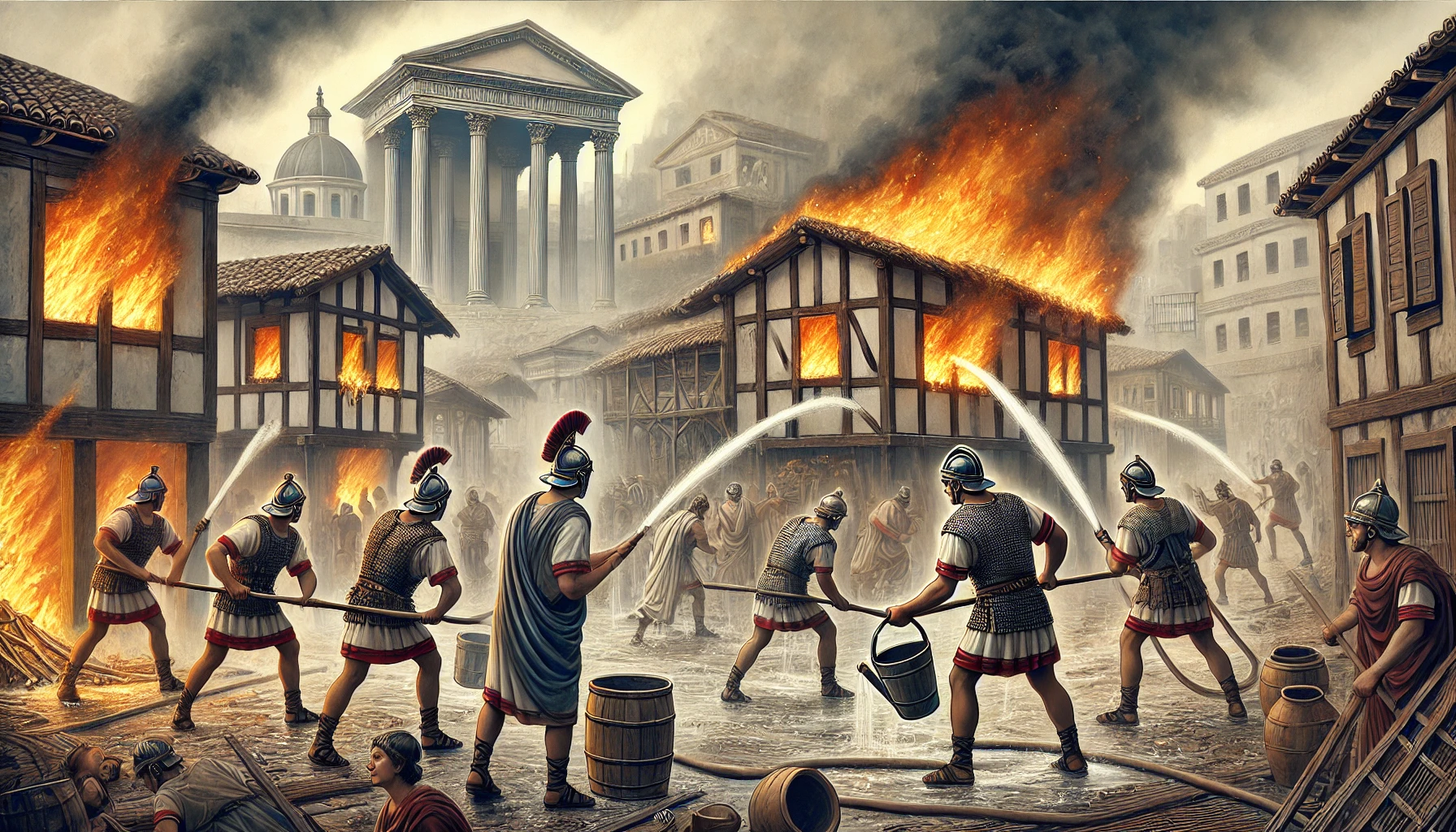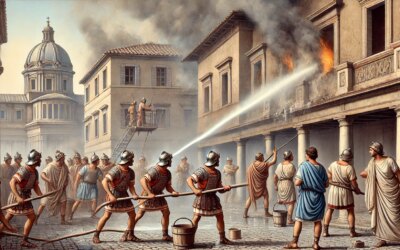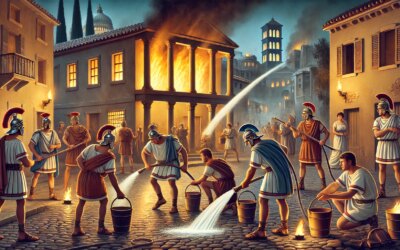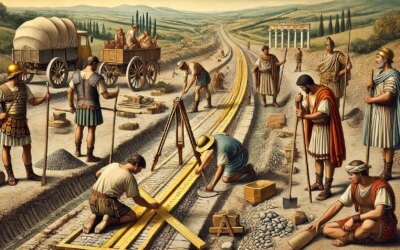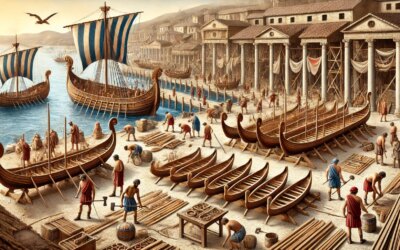When Fire Struck the Eternal City
It begins with a shout in the night. Flames flicker between tenement windows as smoke thickens in the alleyways of Subura. Within moments, men in short tunics and leather helmets appear, buckets in hand. These are the Vigiles, Rome’s state-organized fire brigades of the 1st century AD—the empire’s first line of defense against one of its greatest urban threats: fire.
Why Rome Needed Firefighters
In the 1st century AD, Rome was a city of over one million people—a metropolis dense with insulae (apartment blocks), wooden balconies, and tightly packed shops. Fires were a constant danger, ignited by oil lamps, open stoves, or even lightning. Without a formal firefighting service, the risk to life, property, and imperial prestige was immense.
The solution came under Emperor Augustus, who established the corpus Vigilium around 6 AD—a paramilitary force tasked with patrolling the streets, detecting fires, and extinguishing them before they could consume entire districts.
The Structure of the Vigiles
The Vigiles were organized similarly to a Roman legion but with a civic mission. At their peak, they included:
- 7 cohorts stationed across the city, each responsible for two of Rome’s 14 districts
- Each cohort consisted of around 1,000 men, primarily freedmen (former slaves)
- Commanders known as praefecti Vigilum were equestrians appointed by the emperor
While their official duty was firefighting, the Vigiles also served as night watchmen and minor law enforcement, adding a crucial layer of safety to Rome’s often chaotic nightlife.
Tools and Techniques
The Vigiles used a range of tools and techniques remarkably advanced for their time:
- Bucket chains to transport water from public fountains and wells
- Siphones (hand-operated water pumps) for directing water onto flames
- Axes and hooks to tear down walls and create firebreaks
- Vinegar-soaked cloths to shield themselves from smoke
- Blankets and sand to smother smaller blazes
Stations were strategically placed with equipment ready and horses or runners for swift dispatch. The use of patrols ensured rapid detection and mobilization.
Fighting Urban Fires
When fire broke out, the first task was evacuation and containment. The Vigiles cleared nearby buildings and tried to stop the spread by demolishing flammable structures in the fire’s path. Their work was especially dangerous in Rome’s higher insulae, where narrow staircases and collapsing walls posed lethal risks.
Their presence was most vital in poorer districts, where wooden architecture and illegal building extensions created firetraps. A large fire could displace thousands—and as in the Great Fire of 64 AD, even reshape the cityscape.
The Great Fire of 64 AD and Nero’s Reforms
The most infamous blaze in Roman history struck during the reign of Emperor Nero. Starting near the Circus Maximus, the fire raged for six days, destroying 10 of the 14 city districts. Though rumors accused Nero of instigating the disaster, he enacted significant reforms afterward, including:
- Widening streets and regulating building materials
- Expanding the authority and equipment of the Vigiles
- Mandating the construction of brick buildings with fireproof ceilings
This disaster revealed both the limits and the importance of Rome’s firefighting infrastructure—and led to its strengthening in the following decades.
The Daily Life of a Vigilis
Life as a fireman in ancient Rome was arduous and disciplined. Vigiles trained regularly, patrolled their sectors at night, and lived in barracks. Their service came with modest pay, occasional bonuses, and the possibility of Roman citizenship after years of service.
Despite their freedman status, Vigiles were viewed with respect, particularly in the aftermath of successful interventions. Bronze inscriptions and surviving graffiti celebrate their bravery and contributions to urban life.
Challenges and Limitations
Even with professional brigades, Rome remained vulnerable. The vast scale of the city, combined with a lack of pressurized water systems and limited mobility in narrow alleys, often hampered firefighting efforts. Arson, carelessness, and extreme weather all contributed to frequent outbreaks.
Still, the presence of the Vigiles dramatically reduced the frequency and destructiveness of fires compared to earlier decades—and introduced a civic model that would influence future urban planning.
Legacy and Historical Significance
The Roman Vigiles represent one of the earliest examples of a state-funded fire service in the ancient world. Their model influenced Byzantine, Islamic, and medieval fire response strategies and inspired modern civic institutions.
In architecture, law, and public policy, their legacy endures—visible in building codes, fire zoning, and the concept of public safety as a government responsibility.
Guardians of the Eternal Flame
Though their names are lost to time, the Vigiles of Rome stood between the Eternal City and ruin. With buckets, discipline, and a devotion to duty, they fought against one of history’s most ancient and relentless enemies. Their legacy lives in every fire station and emergency siren that echoes through our cities today.

